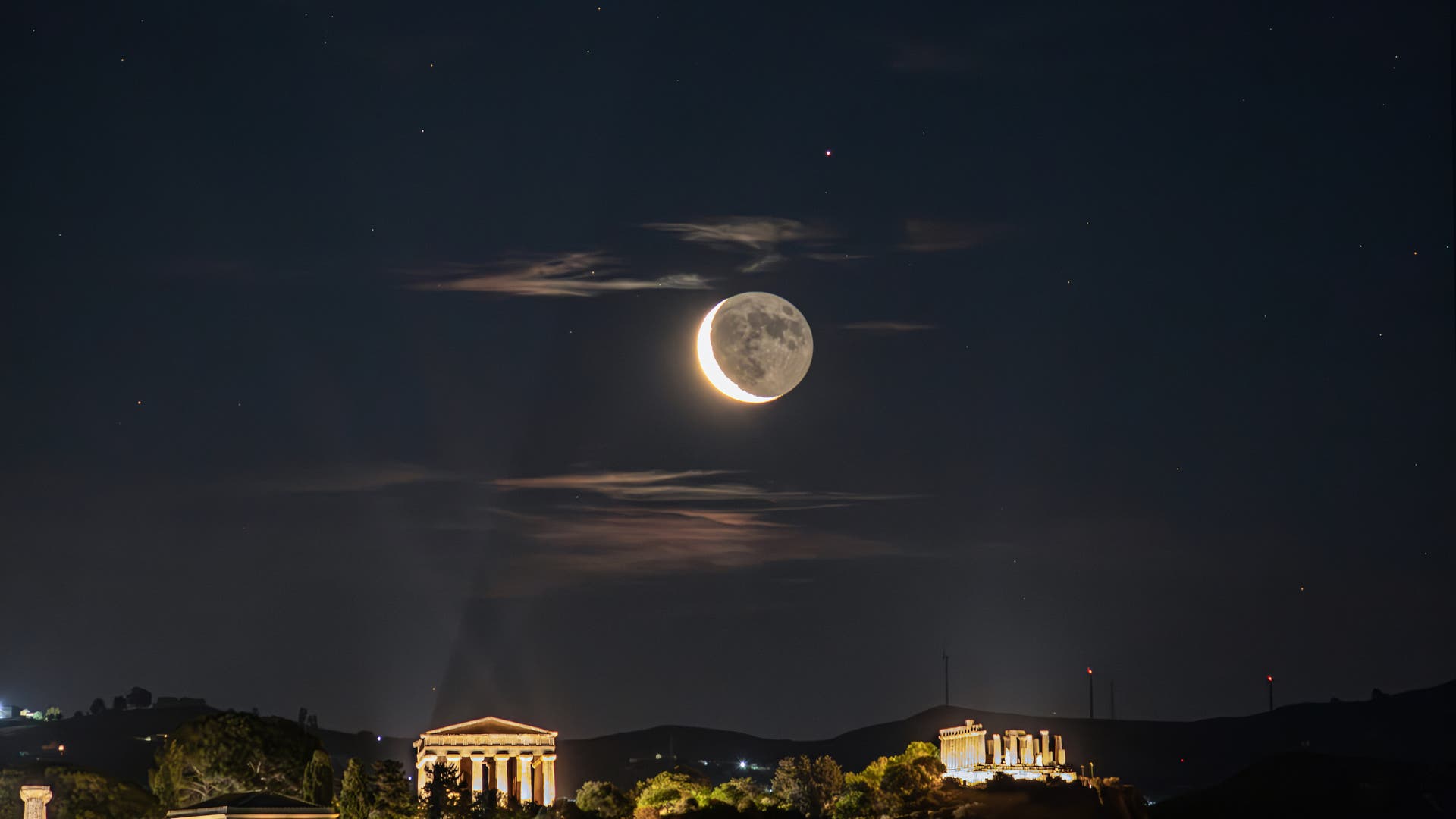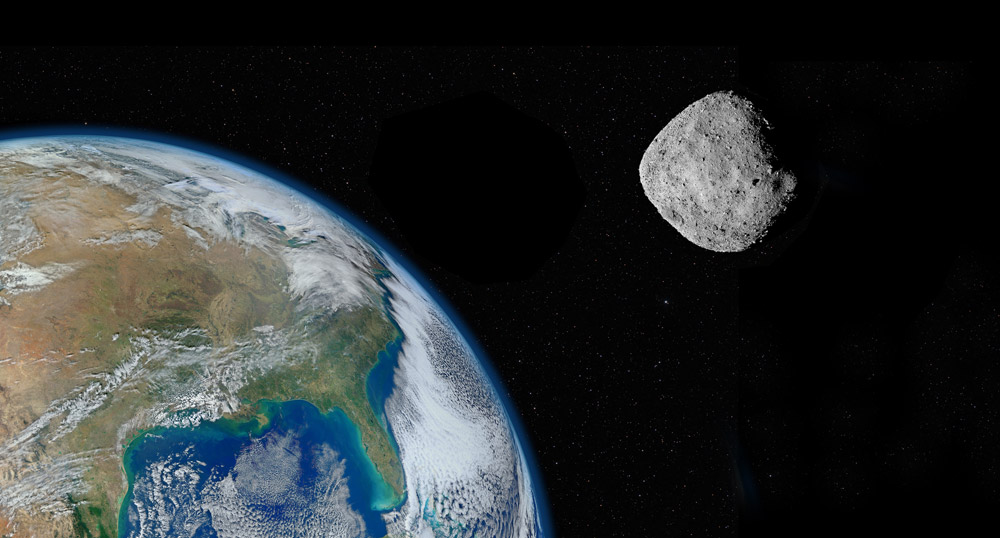October 30, 2023 Reading time: 4 minutes.
RARE BUT POSSIBLE: Asteroid Kamo’oalewa orbits Earth as a small moon, but its origin is disputed – some astronomers believe it is part of the moon, others think this is impossible. But the reconstruction now confirms that the approximately 50-metre-long Kamo’oalewa satellite could have come from the Moon. Ejecting a piece of the Moon through impact and subsequent change to Earth’s orbit is rare, but possible. Therefore, other near-Earth asteroids could be of lunar origin.
Most asteroids orbit the Sun, for example in the asteroid belt. But there are also parts whose orbits are connected to the Earth. They then swing around us in horseshoe-shaped orbits or orbit the Earth as small moons. Most of these satellites were ejected from the asteroid belt by collisions or gravitational perturbations and then captured by Earth’s gravity. There are currently 21 known asteroids in co-orbitals around Earth: two Trojans, six quasatellites, and 13 in horseshoe-shaped orbits.
A semi-satellite called Kamo’oalewa
However, there is a special case, the quasi-satellite Kamo’oalewa, which was discovered only a few years ago: this asteroid, about 50 meters in size, alternates between an Earth orbit and a horseshoe-shaped orbit, allowing it to sometimes run in front of The ground and sometimes fly behind it. Unlike other Earth companions, which usually leave orbit and orbit after a few months or years, Kamualoa has been near Earth for an unusually long time.
“The last transition from the horseshoe orbit to the current quasi-lunar position occurred about a century ago,” say José Castro Cisneros of the University of Arizona and his colleagues. According to their calculations, Kamualoa will return to the Horseshoe Trail in another 300 years. “These changes could last for hundreds of thousands or even millions of years,” scientists say.
Reconstruction of Kamo’oalewa’s orbit changes.© University of Arizona
A mystery about the origin of the small moon
But why does Kamo’oalewa behave so differently from other near-Earth asteroids? Where did he once come from? Spectroscopic observations of the asteroid have already shown that its composition differs significantly from typical near-Earth asteroids. Instead, the chemical profile of the quasatellite is very similar to that of lunar regolith. In 2021, a team of researchers speculated that Kamoalewa might be a piece of the moon that came off the lunar surface due to a meteorite impact.
But the problem is that such a scenario was previously considered extremely unlikely or even impossible. “If part of the Moon has enough kinetic energy to escape lunar gravity, that means it has plenty of energy to enter orbit around Earth as a quasi-satellite,” explains lead author Renu Malhotra of the University of Arizona.
Virtual asteroid billiards
But is this really the case in every case? To find out, the researchers ran through different scenarios using numerical simulations. To do this, they had virtual test pieces hurled into space by lunar impacts at different angles, speeds and lunar regions, and then observed the trajectories they developed.
The result: the majority of test pieces ejected from the virtual satellite did not actually reach near-Earth orbit. “There is a dynamical barrier between the lunar ejecta and the co-orbital states,” the team said. That’s why most of these lunar fragments become called Aten and Apollo asteroids, which orbit the Sun partly within Earth’s orbit and cross it. This is especially true for lunar objects, which are ejected at relatively high speed.
Slower pieces can become companions on the floor
But this does not apply to everyone: “We found that 6.6% of all ejected particles oscillate in co-orbital motion at least temporarily, most of them – 5.8% – in horseshoe-shaped orbits, and 0.8% in alternating horseshoe-shaped orbits. Satellite orbits,” report Castro Cisneros and colleagues. It is therefore rare, but by no means impossible, for a piece of the Moon to be ejected and then become an Earth satellite. “The presence of such orbits strengthens the hypothesis that Kamualoa may be part of the Moon,” the researchers wrote.
The simulation also showed when a portion of the Moon would be most likely to move into Earth’s orbit. Accordingly, lunar objects in particular have a chance, as their ejection velocity is slightly higher than the escape velocity of 2.4 kilometers per second required on the Moon. It’s also a good thing that these asteroids come from the back of the Moon relative to their orbital direction – this also slows down their further journey somewhat.
Long period orbits are also possible
It is also interesting that most of the asteroids stayed near Earth for only a short time in the simulation. But there were also some lunar fragments whose orbital dynamics were similarly stable to those of Kamualoa. “The orbits of these particles showed frequent transitions from quasi-satellite to horseshoe orbits that remained stable for thousands of years,” the team says. For example, one of these rare test pieces showed an orbital pattern in which it was a quasi-satellite of Earth for 400 to 600 years, and followed a horseshoe-shaped orbit at shorter intervals in between – similar to Kamo’oalewa.
“This also confirms that the Moon is the likely starting point for Kamwalewa,” says Malhotra. She and her team also suspect that other asteroids found in Earth’s vicinity could also come from the Moon. (Communications Earth and Environment, 2023; doi: 10.5281/xinodo.8339513)
Source: University of Arizona
October 30, 2023 – Nadia Podbrigar

“Prone to fits of apathy. Zombie ninja. Entrepreneur. Organizer. Evil travel aficionado. Coffee practitioner. Beer lover.”






More Stories
Grand Theft Auto VI: Are these the cast of the two heroes?
Zombies from the Samsung Galaxy S24 Ultra camera: This is how bad a quickly aging close-up photo currently looks online
Sure to be a sequel to the PC classic with thousands of planets